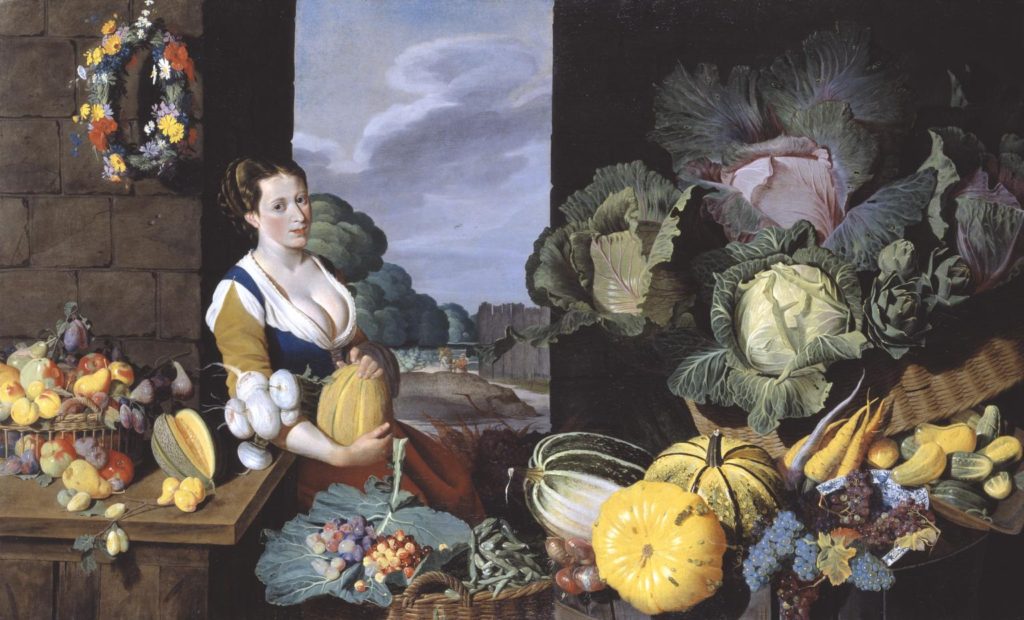Still life is the painting or drawing of an arrangement of objects, typically including fruit or flowers.
History of still life in art:
Still-life as an art form first originated from Ancient Egyptian highly codified mortuary rituals. Egyptians at the time believed that objects represented on the walls of a tomb or inside a sarcophagus would accompany the dead in the afterlife. They would often include Funerary paintings, embellishment elements which are added to the resting place of the dead, to the walls of the tomb. These paintings included objects such as crops, meat and fish, all of which they believed would travel with the individual into the afterlife.
Greek and Romans later realised similar types of paintings though they did not associate any religious symbolism to it. However, unlike Egyptian frescoes which were not using any perspective or shading, Greek and Roman started to develop a somewhat sophisticated form of still-life art, more realistic and detailed.

Many mosaics and paint works survived in Pompeii under the ashes that covered the town when Mount Vesuvius volcano exploded in 79AD. The scenes and objects depicted by the Roman mosaics and paintings show the importance that the Romans put on hospitality, commonly the still-life artworks that have been unearthed in Pompeii and Herculaneum, show offering of food and water made by the hosts to the guests.
Jumping to the 19th century, still life began to fall from favor due to the rise of European Academies. Academies taught the “Hierarchy of genres”, which held that a painting’s artistic merit was based mainly on the subject in the work. After neoclassicism went into decline in the 1830’s, genre and portrait painting became the main focus for the Romantic and Realist revolutions. The still-life paintings of Gustave Courbet, Eugene Delacroix and Francisco Goya portray strong emotional currents, and are less concerned about accuracy and more interested in mood.

Vincent Van Gogh has become one of the most famous painters in history, and his still-life work of sunflowers, done during the 19th century, is well known by many. He uses mostly yellow tones and light shadowing to bring the flowers to life.
Analysis of still-life image:

Although Sir Nathaniel Bacon did not paint professionally, he was a skilled amateur artist. This type of art and subject matter, a cookmaid surrounded by fruits and vegetables, are more associated with Dutch and Flemish art. It is unusual in England for that period in time, however Bacon may have been influenced by pictures of this type during his travels in the low country, and therefore bought the style back with him. Every item in the image is known to have grown in England, and reflects a part of Bacon’s life as he was a keen gardener and successfully grew melons on his Suffolk estate.
In this image, the first thing you see is the woman in the middle. She stands out against the rest of the image, being the only living thing surrounded by fruit and vegetables. You can see all types of fruit and vegetables, such as melons, parsnips, horse radish, lettuce and apples. The amount of fruit and vegetables in the image portrays the wealth of the owner, which was Sir Nathaniel Bacon. You can also see the singular flower wreath to the top left of the image, next to the maid’s head. The image seems to follow the rule of three. The background is split into three, with the left wall, the gap where you can see the outside of the building, and the right wall. There are also three large lettuces on the right side of the image, three large pumpkins/melons at the bottom, and three small lemons on the left side, on the table. The tone of the image seems quite cold and dark, there’s no sunlight and the clouds in the distance are grey and gloomy.
